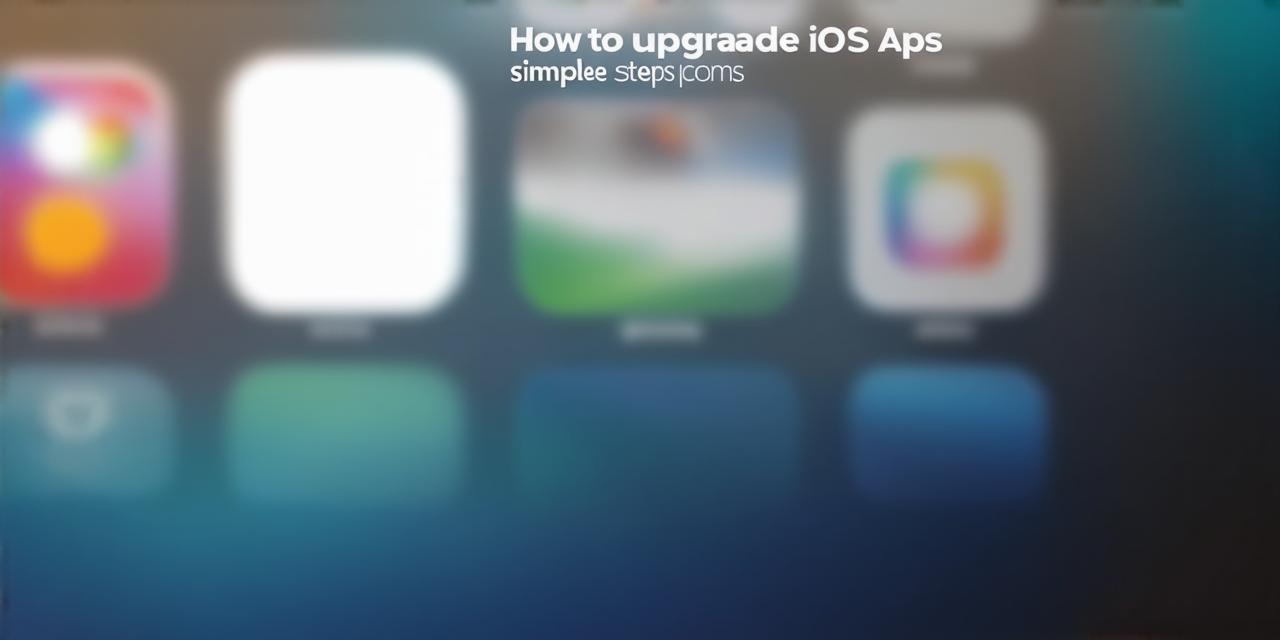
Preparing for Updates
Before you start the upgrade process, it’s crucial to prepare your application thoroughly. Here are some essential steps to take:
-
Test your application extensively: Before releasing an update, test your application thoroughly to ensure that it works as expected. You can use automated testing tools or manual testing methods to identify and fix any issues. This step is critical to prevent any bugs or glitches from affecting your users.
-
Review user feedback: Take the time to review user feedback and reviews to identify areas of improvement. This will help you prioritize which features to include in your update. You can also use this feedback to improve the overall user experience of your application.
-
Create a roadmap: Develop a clear roadmap for future updates, outlining which features you plan to add or remove. This will help you keep your users informed and give them a sense of what to expect. It’s important to communicate any changes to your users to avoid confusion or frustration.
-
Plan your release strategy: Determine the best way to release your update, whether it be through the App Store or manually. Consider factors such as timing, frequency, and user preferences. It’s essential to choose a release strategy that works for both you and your users.
Implementing Updates
Once you have prepared for the update process, it’s time to implement the changes. Here are some essential steps to take:
-
Update your code: Make the necessary changes to your codebase to include new features or fix bugs. Ensure that all code is optimized and efficient. It’s important to test your code thoroughly after making updates to ensure that everything works as expected.
-
Test again: After making updates to your code, test your application thoroughly once again to ensure that everything works as expected. It’s critical to catch any bugs or glitches before releasing the update to users.
-
Release your update: If you are releasing your update through the App Store, follow the guidelines for submitting your update. If you are manually distributing your update, make sure to distribute it through a secure and reliable method. It’s important to choose a distribution method that works for both you and your users.
-
Monitor user feedback: Once your update is live, monitor user feedback and reviews to identify any issues or areas for improvement. This will help you continue to improve your application over time. You can use this feedback to make future updates more effective and relevant to your users.
FAQs
Q: How often should I release updates to my application?
A: The frequency of updates depends on the needs of your users and the features you plan to include in your updates. As a general rule, it’s recommended to release updates at least once a month. However, if you have critical bug fixes or security enhancements that need to be addressed, you may want to release an update more frequently.
Q: Should I release updates manually or through the App Store?
A: It depends on your specific circumstances. If your update includes critical bug fixes or security enhancements, it may be best to release it manually. However, if you are adding new features or improving existing ones, it’s generally recommended to release updates through the App Store. The App Store provides a more streamlined and secure way to distribute updates to users.
Q: How can I ensure that my users receive updates automatically?
A: To ensure that your users receive updates automatically, make sure to enable automatic updates in the settings of your application. This will ensure that your users always have access to the latest version of your application. You can also set up notifications to alert users when new updates are available.
Summary
Upgrading applications on iOS is an important task for developers to ensure that their users have access to the latest features and bug fixes. By following these steps, you can ensure that your users receive the best possible experience and that your application remains relevant and up-to-date. Remember to test extensively, review user feedback, and plan your release strategy carefully to ensure a successful update process. With these guidelines in mind, you can keep your users happy and continue to grow your application over time.
